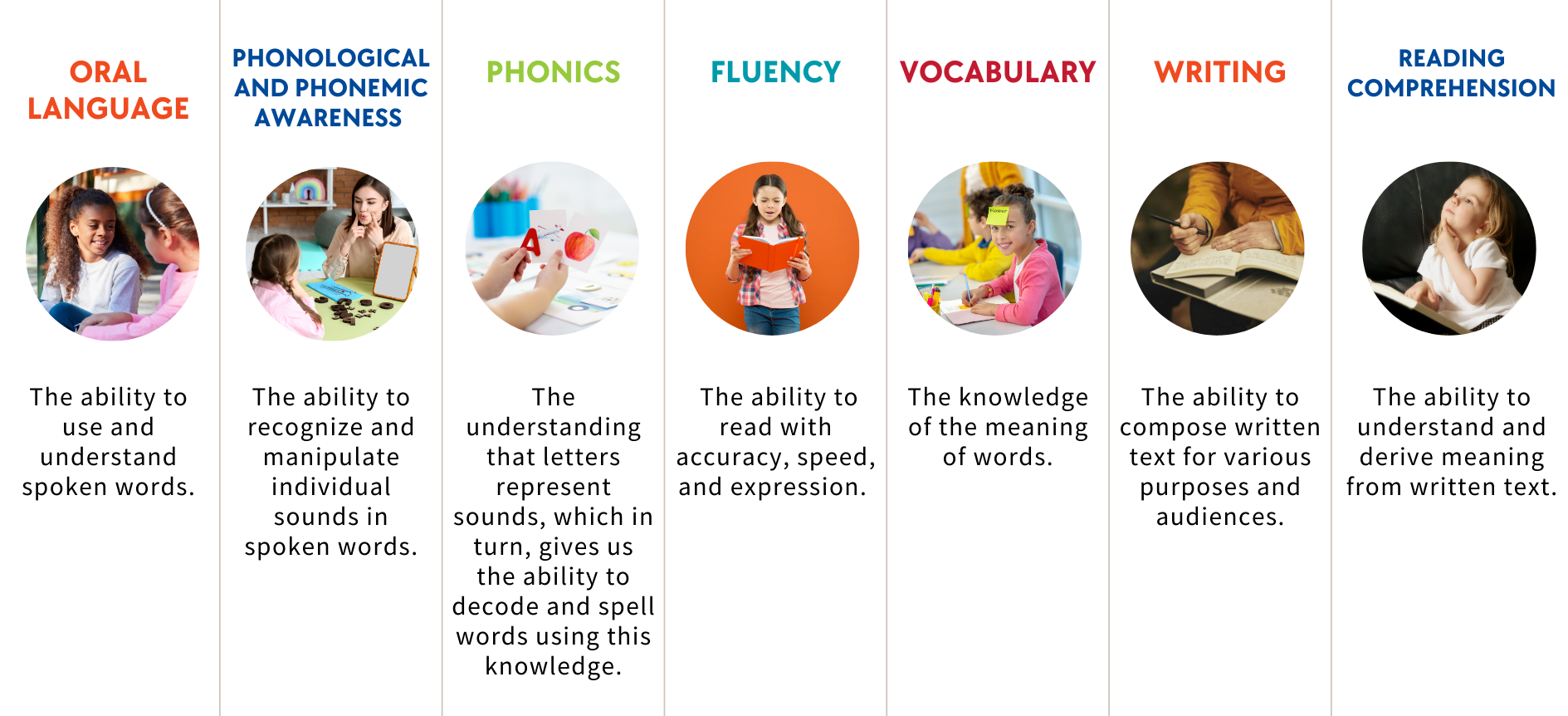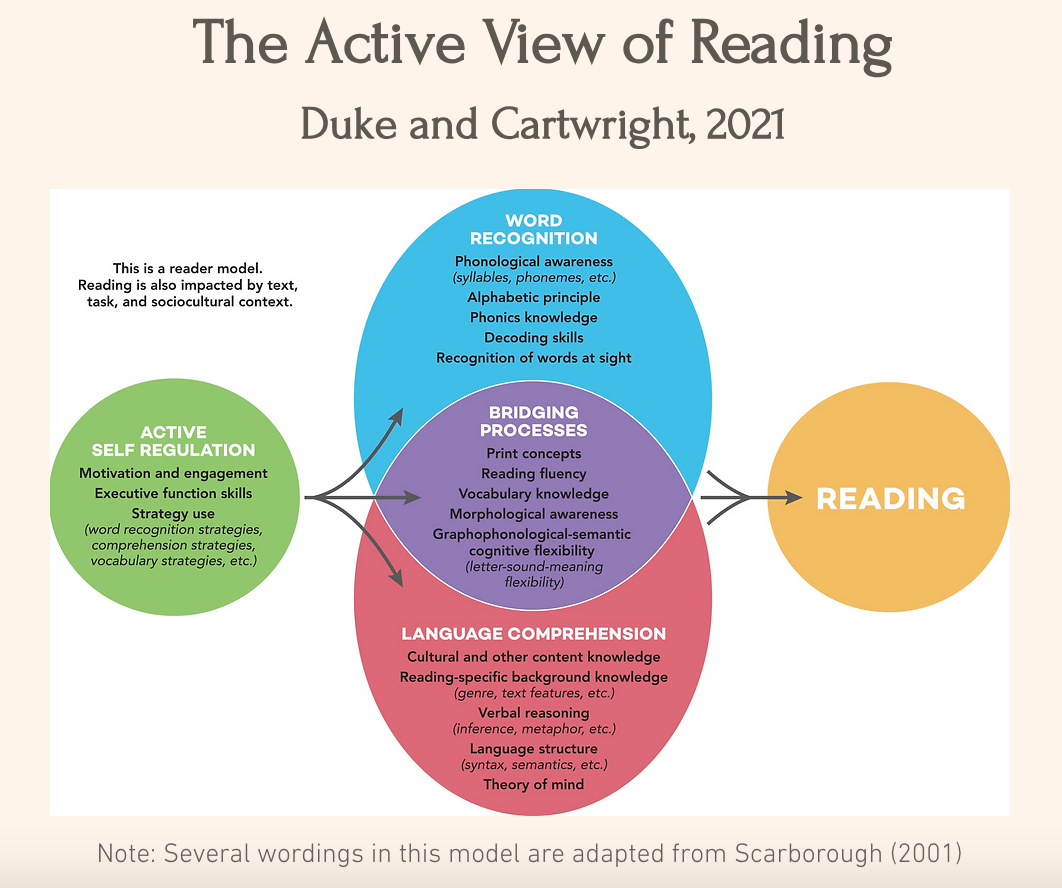SD22 approaches literacy from a research-based lens that integrates findings from cognitive science, linguistics, and neuroscience. Our approach seeks to provide responsive, personalized learning opportunities for each student, delivered through a play-based lens. Working from this understanding of how children learn to read and write, SD22’s early literacy instruction emphasizes the role of foundational literacy skills. Several of these key literacy components that help students develop the ability to read and write are:


When considering Duke & Cartwrights (2022), Active View of Reading model, we understand that literacy learning is an active process, rather than a passive one, where readers actively construct meaning from texts, by interacting with text, tasks, and learning environments.
According to this model, literacy development consists of multiple cognitive processes (Active Self-Regulation, Word Recognition, Bridging Processes, and Language Comprehension) that together result in students learning to read.
This model highlights the importance of both text and reader in the reading process and emphasizes the role of cognitive and metacognitive strategies in comprehension.
